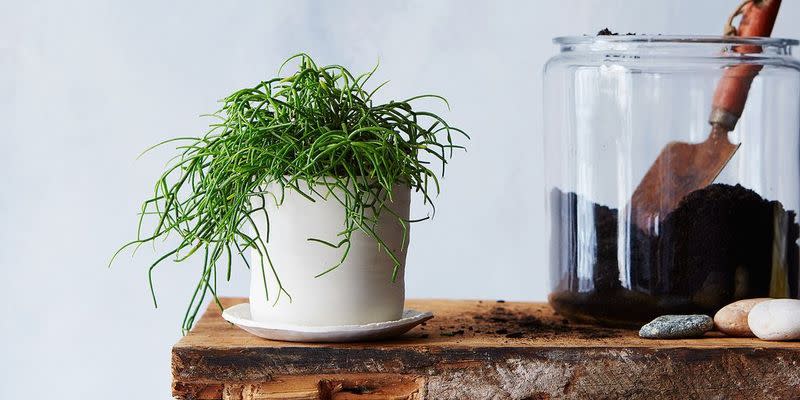How to keep your succulent alive

A spiky little plant—stout cactus or lotus-like succulent—won you over at the hardware store or plant shop and, perhaps against your better judgement, you took it home and stuck it in the windowsill and crossed your fingers. That is an excellent start, and frankly, most succulents and cacti don't need too much more than that.
But since these desert plants aren't native to the conditions of the average windowsill, they do require a little nurturing to stay perky. Christopher Satch, plant specialist over at The Sill, shares his 3 best tips for keeping succulents and cacti happy and alive wherever you live:

1. Sun, sun, sun.
Succulents and cacti are pretty resilient—they do well in deserts, after all, where it's dry and the temperatures lean extreme—but they do need a lot of sun. Give them as much direct light as possible: Windowsills, or any other bright, sunshine-y spot in your home, are where they'll be happiest.
Don't worry too much about your windowsill being too cold for your succulents, but do position them away from drafts.
2. Under-watering is better than over-watering.
Think about the desert again—not a lot of rain, but when it comes, it's often a big flush of water. That's how to think about watering succulents and cacti: Water them less often than your other houseplants, but give them a good long drink when you do. ("Once a week in the summer, and once a month, if that, in the winter," said Chris.) If your plant isn't in direct sunlight, where it's cooler and the water doesn't evaporate as quickly as it does in full sun, water your plant even less. Between waterings, lay off until the soil is completely dry.
Keeping succulents and cacti dry is important, since they're very prone to fungus and rot, in part because of their delicate root systems. If icebergs have just a little going on above the water and a heck of a lot going on beneath it, succulents and cacti are the opposite: Their root structures are minimal and very small, Chris told me. They'll develop roots to drink up water when it comes, but then let some of those roots die off when the soil is dry (so that they can be efficient with their energy). Too much water overwhelms the roots and provides opportunities for rot—bad news for your little plant.
See also: How to make a terrarium (and keep it alive)

To avoid this, water infrequently, keep the body and leaves of the plant dry, and make sure you keep your plant in a container that drains well. Additionally, consider potting in a specific succulent/cactus potting mix, which is designed to drain water, instead of regular potting mix, which is designed to retain moisture. When in doubt, just wait for your succulent to tell you it's thirsty: "They'll shrivel a bit and get wrinkles," said Chris, "and that's when it's time to water them again."
3. Patience.
Succulents and cacti don't grow quickly—and it doesn't mean you're doing anything wrong if they stay pretty much the same size for a long time. They cycle in and out of growth spurts, and will grow a bit when conditions are ideal (read: super-sunny, warm, dry spells), but may not grow much at all for months at a time, especially during the winter. It's not that they're not healthy; they're just conserving energy.
What succulents and cacti do you have in your home? Tell us their stories in the comments.
More from Food52:
8 Chicken Recipes That Come with Their Own Sides
Lemon Cupcakes They'll Never Know Are Vegan
How to Make the Crispiest, Dreamiest Macaroni and Cheese

